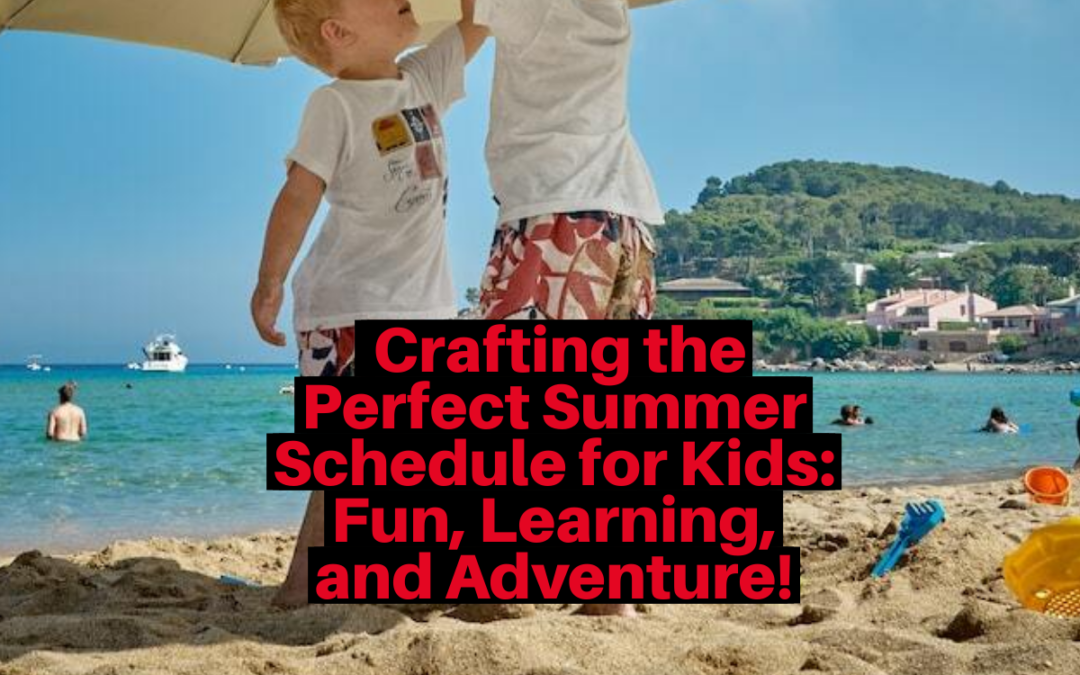
by bitsofthewilliams | Jul 18, 2023 | LIFESTYLE, PARENTING
Ah, summertime—the season of sunshine, laughter, and boundless energy! As school doors close, children eagerly embrace the freedom that summer brings. However, without a structured routine, days can quickly dissolve into endless screen time and monotony. That’s where a well-designed summer schedule for kids comes to the rescue! By balancing recreation, learning, and exploration, parents can create an engaging and fulfilling summer experience for their little ones. In this blog post, we’ll explore the essential elements of a summer schedule that promotes both fun and personal growth.
-
Prioritize Outdoor Activities: The warm weather and longer days provide the perfect backdrop for outdoor adventures. Encourage your kids to spend time outside, engaging in physical activities like swimming, cycling, hiking, or even joining a summer sports camp. Outdoor play promotes exercise, social interaction, and a sense of wonder about the natural world.
-
Nurture Creative Expression: Summer is an excellent time for kids to explore their artistic side and engage in creative activities. Set aside specific times for crafts, painting, drawing, or DIY projects that stimulate their imagination. Encourage them to explore various mediums and express their unique ideas. Consider organizing a mini art exhibition at the end of the summer to showcase their creations.
-
Cultivate Learning Opportunities: While summer is a break from formal education, it doesn’t mean the learning has to stop. Integrate educational activities into the summer schedule to ensure your kids continue to grow intellectually. Choose age-appropriate books for them to read, visit the local library, or enroll them in educational programs that align with their interests. Online courses or virtual workshops can be great options too.
-
Encourage Volunteering and Social Responsibility: Incorporate elements of community service and social responsibility into your child’s summer schedule. Engaging in volunteer work helps kids develop empathy, compassion, and a sense of responsibility towards others. Encourage them to participate in local charity events, help out at animal shelters, or even organize a neighborhood clean-up day. Such activities foster personal growth and create a positive impact on society.
-
Foster Family Bonding: Summer offers a unique opportunity for quality family time. Plan regular family outings, picnics, and game nights to strengthen bonds and create lasting memories. Explore nearby parks, museums, or organize a family vacation to a destination your kids have been longing to visit. The joy and togetherness experienced during these moments will stay with them for a lifetime.
-
Balance Screen Time: While it’s important to allow some screen time, it’s equally vital to set limits. Excessive screen time can hinder physical activity, creativity, and social interaction. Establish specific time slots for educational or age-appropriate entertainment content, and encourage alternative activities that stimulate their minds and bodies.
Designing a well-rounded summer schedule for kids is all about striking the right balance between recreation, learning, and personal growth. By incorporating outdoor activities, fostering creativity, encouraging learning, promoting social responsibility, and nurturing family bonds, parents can ensure their children have a summer filled with fun and valuable experiences. Remember, every child is unique, so tailor the schedule to their interests and needs. Let this summer be a time for your children to explore, discover, and make beautiful memories that will last a lifetime. Happy summer planning!
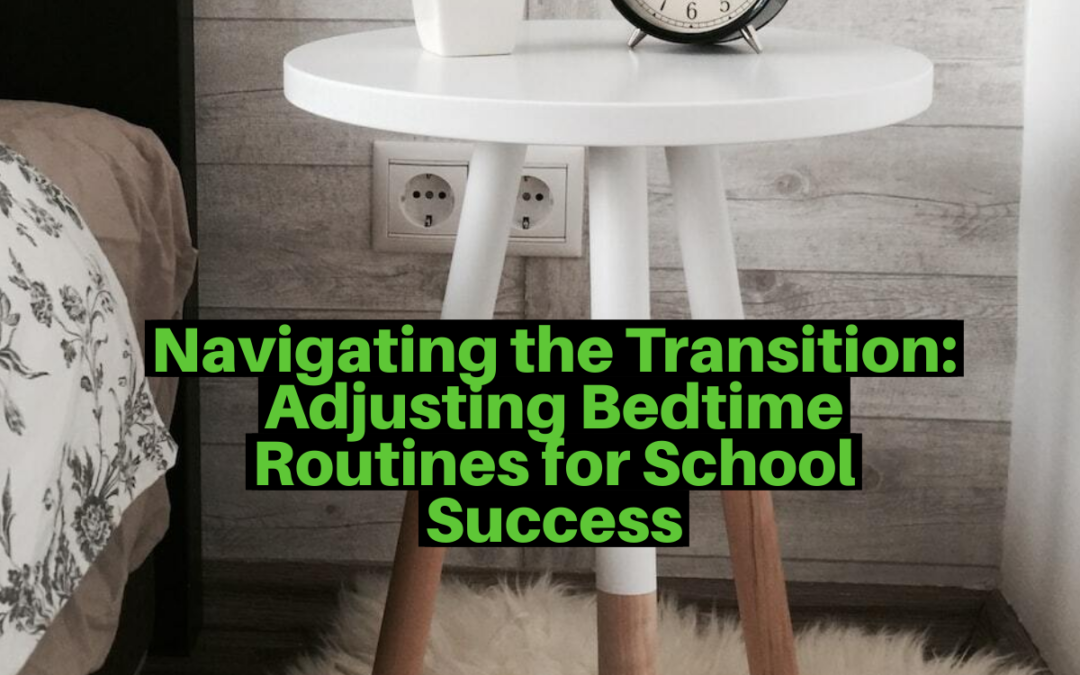
by bitsofthewilliams | Jul 18, 2023 | BACK TO SCHOOL EDITION, PARENTING
With the start of a new school year, it’s important to establish a consistent and healthy bedtime routine. A well-rested mind and body are essential for academic performance, focus, and overall well-being. However, transitioning from a relaxed summer schedule to a structured school routine can be challenging. In this blog post, we will explore practical strategies to help you and your family adjust bedtime routines smoothly, ensuring a restful night’s sleep and a successful school year.
-
Gradual Transition:
Start adjusting your bedtime gradually a week or two before the school year begins. Each night, move bedtime 15 minutes earlier until you reach the desired school bedtime. This gradual transition allows your body to adapt to the new schedule without sudden disruptions, making the adjustment process easier.
-
Consistent Sleep Schedule:
Establish a consistent sleep schedule, aiming for the recommended 7-9 hours of sleep for school-aged children and 8-10 hours for teenagers. Determine the time you need to wake up for school and work backward to determine an appropriate bedtime. Consistency helps regulate your body’s internal clock and improves the quality of sleep, ensuring you feel refreshed and alert in the morning.
-
Wind-Down Routine:
Create a wind-down routine to signal to your body that it’s time to relax and prepare for sleep. This routine should be consistent and include activities that promote relaxation. Consider incorporating calming activities such as reading a book, taking a warm bath, practicing deep breathing exercises, or listening to soft music. Avoid stimulating activities like screen time or intense physical exercise close to bedtime, as these can disrupt sleep patterns.
-
Limit Screen Time:
The blue light emitted by electronic devices can interfere with the production of melatonin, a hormone that regulates sleep. Establish a “screen curfew” by limiting electronic device usage at least an hour before bedtime. Encourage activities that do not involve screens, such as reading, journaling, or engaging in quiet conversations, to promote a more peaceful transition to sleep.
-
Create a Sleep-Friendly Environment:
Design a sleep-friendly environment that promotes relaxation and quality sleep. Keep your bedroom cool, dark, and quiet, as these conditions are conducive to optimal sleep. Consider using blackout curtains, earplugs, or a white noise machine to create a peaceful atmosphere. Invest in a comfortable mattress, pillows, and bedding to enhance sleep quality and overall comfort.
-
Avoid Caffeine and Heavy Meals:
Caffeine and heavy meals close to bedtime can interfere with sleep patterns. Limit caffeine intake, especially in the late afternoon and evening, and opt for decaffeinated beverages instead. Additionally, avoid large meals or spicy foods right before bed, as these can cause discomfort and make it harder to fall asleep.
-
Establish a Morning Routine:
A smooth transition to the school routine involves not only adjusting bedtime but also establishing a consistent morning routine. Wake up at the same time each day, allowing yourself enough time to prepare for the day ahead. Start the morning with a balanced breakfast, engage in light physical activity, and allocate time for personal hygiene and getting dressed. A structured morning routine sets a positive tone for the day and helps you feel more prepared and focused.
Adjusting bedtime routines for school is a vital step in ensuring a successful and productive academic year. By implementing these strategies, you can ease the transition from a relaxed summer schedule to a structured school routine. Remember that consistency, gradual adjustments, and creating a sleep-friendly environment are key to achieving restful nights and energized mornings. Prioritize your sleep, and watch as improved rest and well-being positively impact your school performance and overall quality of life.
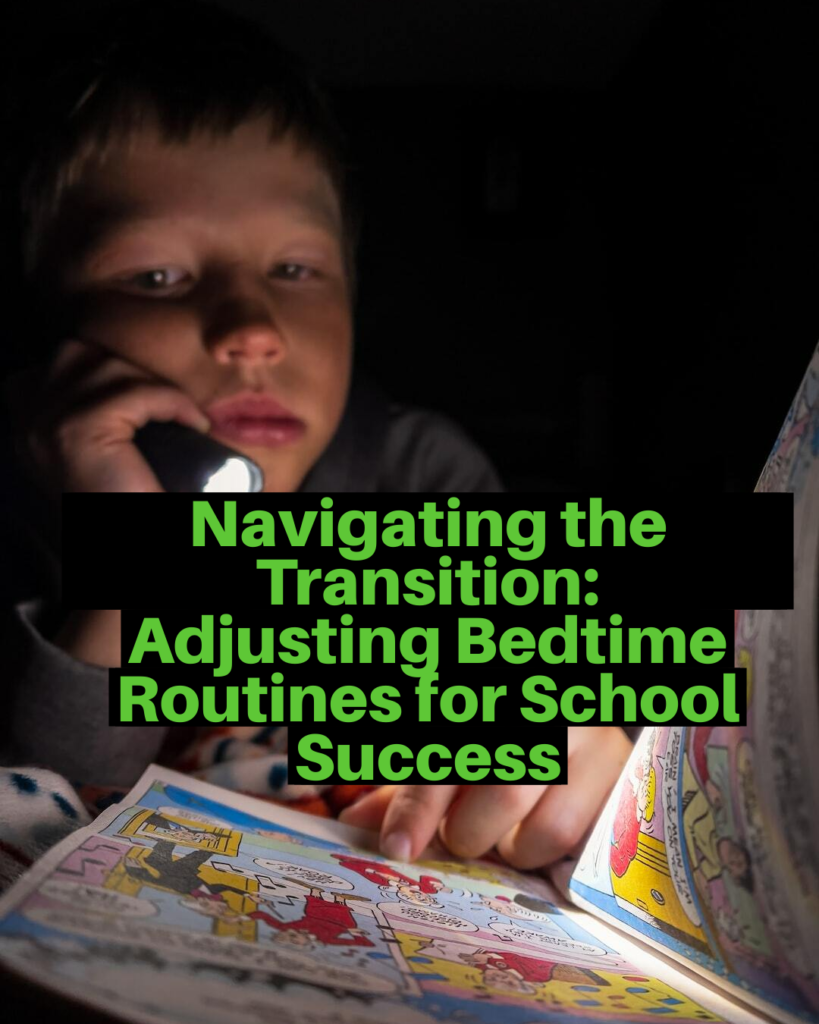

by bitsofthewilliams | Jul 18, 2023 | KIDS CORNER, PARENTING
Science is an exciting world of exploration, curiosity, and discovery, and it’s never too early to introduce kids to its wonders. Engaging children in hands-on science experiments not only stimulates their creativity but also nurtures their problem-solving skills and critical thinking. With just a few simple materials, parents and educators can create unforgettable learning experiences that leave a lasting impact. In this blog post, we’ll delve into five fun and educational science experiments that will captivate young minds and ignite their passion for science.
Colorful Volcanoes:
Who doesn’t love the explosive nature of volcanoes? This experiment will bring that excitement right into your kitchen! Gather some baking soda, vinegar, food coloring, and a small container (e.g., a plastic cup). Place the container on a tray or in a shallow bowl to contain any spills.
Guide the kids in filling the container halfway with vinegar. Next, add a few drops of food coloring to the vinegar and stir. Now, create a “volcano” by building a mound with baking soda on top of the container. Once it’s ready, stand back and watch the colorful eruption!
As the baking soda (a base) reacts with the vinegar (an acid), it produces carbon dioxide gas, causing the bubbly “lava” to overflow. Use this moment to discuss the basics of chemical reactions and the wonders of nature’s forces.
Dancing Raisins:
This experiment will have kids mesmerized by the magical dance of raisins! All you need are some raisins, clear carbonated water (e.g., club soda), and a tall glass.
Fill the glass with the carbonated water and drop a few raisins into it. Observe how the raisins initially sink to the bottom but quickly rise to the surface, then sink again. The carbon dioxide bubbles in the water attach themselves to the rough surface of the raisins, causing them to rise. As the bubbles pop at the surface, the raisins sink again. The cycle repeats, creating the captivating “dancing” effect.
Oobleck: A Non-Newtonian Fluid
Introduce kids to the fascinating world of non-Newtonian fluids with a playful batch of Oobleck. This gooey mixture acts as both a liquid and a solid, offering a memorable sensory experience.
To make Oobleck, mix one part water with two parts cornstarch in a bowl. Kids can use their hands to explore the substance’s unique properties, such as its ability to flow like a liquid when gently handled but turn solid when squeezed or hit. Encourage them to ask questions and observe how the Oobleck behaves differently from regular liquids and solids.
Rainbow in a Glass:
With just a few household ingredients, you can create a stunning rainbow in a glass, teaching kids about the density of different liquids.
Gather a tall, clear glass, honey, corn syrup, dish soap, water, vegetable oil, and food coloring in rainbow shades. Carefully pour each liquid into the glass, starting with the heaviest (honey) and ending with the lightest (water). The different densities will keep the layers separated, creating a vibrant rainbow effect. Kids will love the visual spectacle and the scientific explanation behind it.
Bending Light with Water:
Turn your little scientists into magicians by bending light with water! This experiment requires a clear glass, water, a piece of paper, and a flashlight.
Fill the glass with water and place it on a table. Lay the piece of paper flat on the table and hold the flashlight close to the paper’s edge, at an angle. Now, let the light pass through the water-filled glass and observe how the light bends as it travels through the water, creating a mesmerizing effect on the paper.
Science experiments offer the perfect blend of entertainment and education, encouraging kids to question, explore, and embrace their natural curiosity. These five hands-on activities provide an excellent starting point to introduce young minds to the wonders of the scientific world. By fostering their passion for science from an early age, we set them on a path of lifelong learning and discovery. So, grab those lab coats (or aprons), gather some materials, and let the scientific adventures begin!

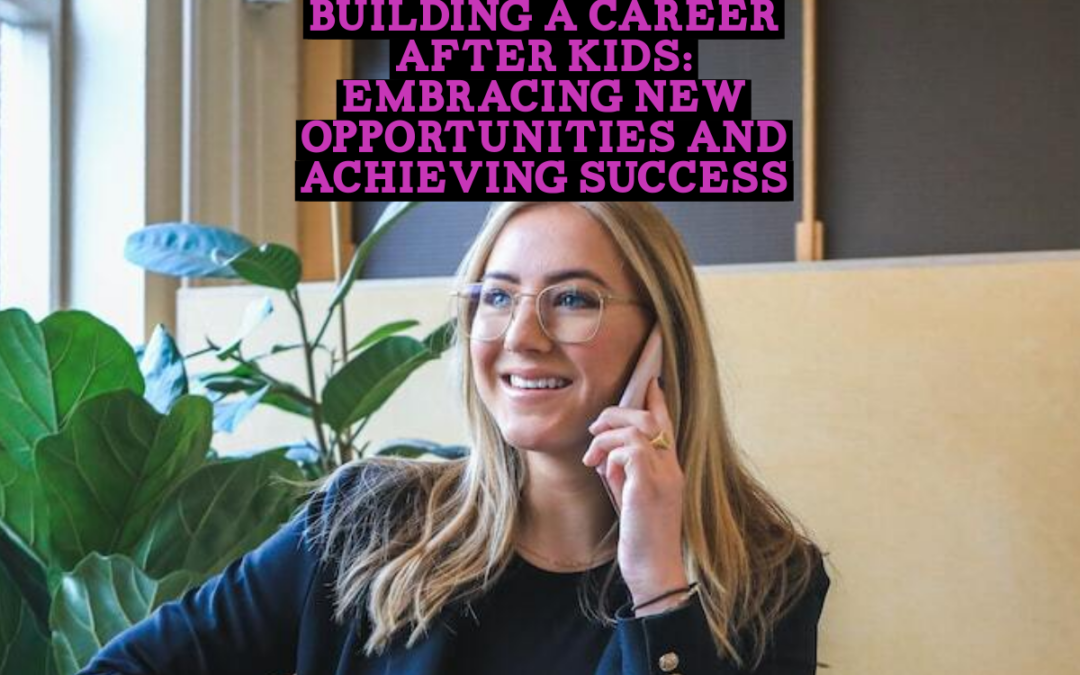
by bitsofthewilliams | Jul 16, 2023 | BOSS MOM TIPS, PARENTING
Becoming a parent is a life-altering experience that brings immense joy and fulfillment. However, it also introduces new challenges, including balancing childcare responsibilities with personal aspirations. Many parents face the question of how to rebuild their careers after having children. The good news is that it is possible to navigate this transition successfully and create a fulfilling and rewarding career path. Let’s explore some strategies and tips for building a career after kids.

-
Reflect on Your Goals: Before diving into the job search or career development process, take some time to reflect on your goals and aspirations. What type of work aligns with your interests and values? Consider the skills and experiences you bring to the table and how they can be leveraged in your desired field. This self-reflection will help you gain clarity and make informed decisions about your career path.
-
Explore Flexible Work Options: Balancing childcare and work responsibilities can be challenging. Look for flexible work options that allow you to manage both effectively. Options like remote work, flexible hours, or part-time positions can provide the flexibility needed to accommodate your family’s needs. Research companies or industries that prioritize work-life balance and seek out opportunities that align with your requirements.
-
Update Your Skills: The job market is constantly evolving, and staying relevant is crucial. Take the time to update your skills and knowledge in your chosen field. Attend workshops, take online courses, or join professional organizations that offer training and networking opportunities. By staying current, you enhance your marketability and increase your chances of securing a rewarding career.
-
Leverage Your Network: Your network can be a valuable asset when rebuilding your career. Reach out to former colleagues, friends, and acquaintances who may be able to provide guidance, advice, or potential job leads. Attend industry events and network with professionals in your desired field. Building and nurturing relationships can open doors to new opportunities and help you gain insights into the job market.
-
Seek Support: Building a career after kids requires support and understanding. Reach out to support groups, online communities, or organizations specifically designed for parents transitioning back to work. These resources can offer guidance, advice, and a supportive network of individuals who are facing similar challenges. Surrounding yourself with like-minded individuals can provide the motivation and encouragement needed to pursue your career goals.
-
Emphasize Transferable Skills: As a parent, you have developed a range of skills that are transferable to the workplace. Effective time management, multitasking, problem-solving, and communication skills are just a few examples. Highlight these skills on your resume and during interviews to showcase the value you bring to potential employers. Emphasizing your ability to adapt, organize, and prioritize can make you a highly desirable candidate.
-
Create a Plan: Developing a strategic plan is essential when building a career after kids. Set short-term and long-term goals and outline the steps needed to achieve them. Create a timeline, identify key milestones, and track your progress along the way. This plan will serve as a roadmap, keeping you focused and motivated as you navigate your career journey.
-
Practice Self-Care: Balancing parenting and a career can be demanding, both physically and emotionally. Make self-care a priority to maintain your overall well-being. Take time for yourself, engage in activities that recharge you, and seek support from family and friends. Taking care of yourself ensures that you have the energy and resilience needed to pursue your career goals effectively.
Building a career after having children may seem daunting, but it is an opportunity for personal growth, fulfillment, and financial independence. By reflecting on your goals, seeking flexible work options, updating your skills, leveraging your network, seeking support, emphasizing transferable skills, creating a plan, and practicing self
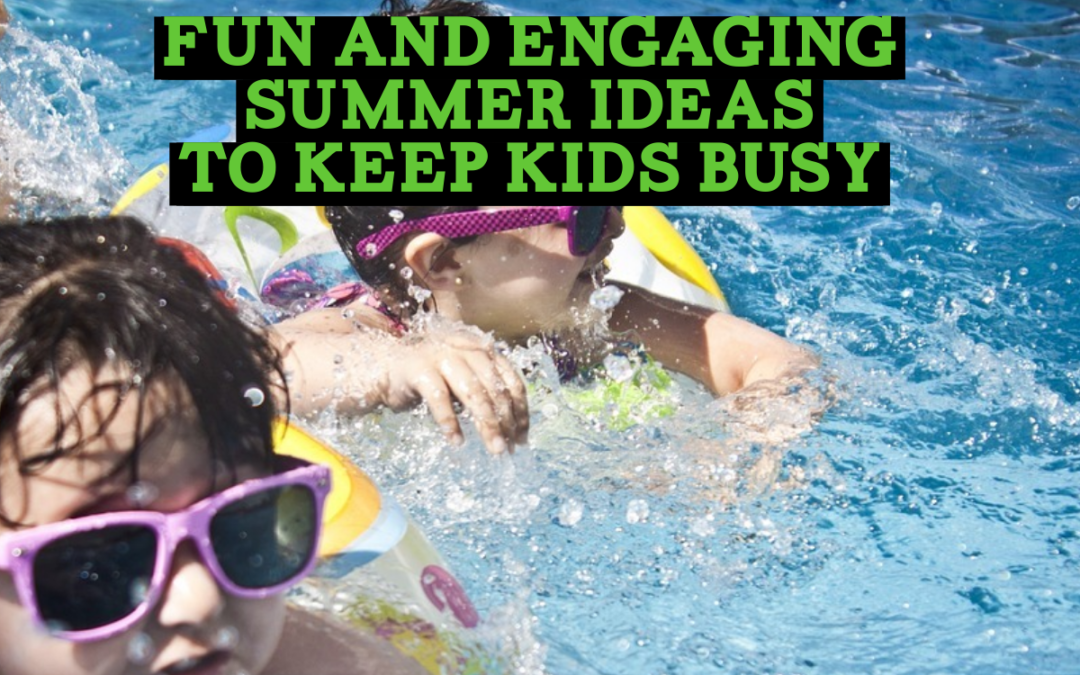
by bitsofthewilliams | Jul 16, 2023 | PARENTING
Summer is a time for kids to relax, have fun, and make the most of their break from school. However, it’s also important to keep them engaged and entertained during these months. To help you plan an exciting and fulfilling summer for your kids, we’ve compiled a list of ideas to keep them busy and active. Let’s dive in!
Outdoor Adventures: Take advantage of the warm weather and encourage outdoor exploration. Plan trips to local parks, beaches, or hiking trails. Let your kids discover the wonders of nature, engage in imaginative play, and soak up the sun while keeping active.
Arts and Crafts: Spark your child’s creativity with arts and crafts projects. Set up a dedicated art space at home with supplies like paints, crayons, colored pencils, and paper. Encourage them to create masterpieces, build sculptures, or even start a scrapbooking project.
Science Experiments: Foster their curiosity by conducting simple science experiments at home. Create a volcano eruption with baking soda and vinegar, make a homemade lava lamp, or grow crystals. These hands-on activities will entertain and educate them simultaneously.
Cooking and Baking: Get your little chefs involved in the kitchen. Let them help prepare simple meals or bake treats like cookies, cupcakes, or pizzas. Not only will they have fun, but they’ll also develop valuable life skills in the process.
Reading Adventures: Encourage a love for reading by creating a summer reading challenge. Set reading goals and provide incentives for completing them. Take regular trips to the library to discover new books and create a cozy reading nook at home.
Gardening: Teach your kids about nature and responsibility by starting a small garden. Let them choose the plants, dig in the soil, and care for their little patch of greenery. It’s a hands-on learning experience that fosters a love for nature and an understanding of the environment.
Sports and Games: Organize backyard Olympics or create a neighborhood sports league. Encourage friendly competition and teach them the importance of teamwork. From soccer and basketball to relay races and scavenger hunts, there are endless possibilities to keep them active and engaged.
Day Trips and Excursions: Plan day trips to nearby attractions like amusement parks, zoos, or museums. These outings provide opportunities for new experiences, learning, and family bonding. Research local events and festivals happening during the summer and explore your community’s offerings.
Summer Camps: Enroll your kids in summer camps tailored to their interests. Whether it’s sports, arts, coding, or nature exploration, there’s a camp for every child. These programs provide structured activities, new friendships, and a chance to develop skills in a fun and supportive environment.
DIY Projects: Encourage hands-on learning by engaging in DIY (do-it-yourself) projects. Build a birdhouse, create a homemade kite, or construct a fort using recycled materials. These projects promote problem-solving, creativity, and resourcefulness.
Movie Nights and Theater: Set up cozy movie nights at home with popcorn and blankets. Alternatively, attend local outdoor movie screenings or summer theater productions. It’s a chance to introduce your kids to the magic of cinema and live performances.
Volunteer Work: Instill a sense of community and compassion in your kids by involving them in volunteer activities. Whether it’s helping at a local shelter, organizing a charity drive, or participating in a beach cleanup, these experiences teach empathy and the importance of giving back.
Remember, summer is a time for kids to relax and enjoy themselves, so make sure to balance structured activities with plenty of free time for unstructured play and relaxation. Allow them to explore their interests, discover new hobbies, and have the freedom to be creative. By providing a mix of engaging activities, you’ll keep them busy, stimulated, and happy throughout the summer months.

by bitsofthewilliams | Jul 14, 2023 | PARENTING, TRAVEL
The sun is shining, school’s out, and the possibilities are endless – it’s summertime! The season of adventure, exploration, and making unforgettable memories has arrived. To make the most of this exciting time, it’s a great idea to create a summer bucket list for your kids. A summer bucket list is a collection of activities, adventures, and experiences that your children can look forward to and check off as they accomplish them. In this blog post, we’ll guide you through crafting the ultimate summer bucket list for kids, ensuring they have a summer filled with excitement, joy, and lifelong memories.
Explore the Great Outdoors: Encourage your kids to embrace nature and embark on outdoor adventures. Hiking through scenic trails, camping under the stars, building sandcastles at the beach, or exploring local parks are excellent ways to connect with the beauty of the natural world.
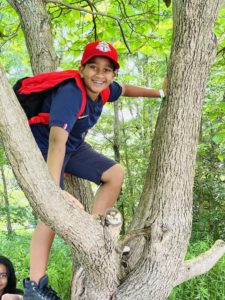
Dive into Water Fun: Beat the summer heat with an array of water-based activities. Whether it’s swimming in a pool, splashing in the ocean, or visiting a water park, make sure to include water fun in your summer bucket list. Don’t forget to teach your kids to swim or try out new water sports like kayaking or paddle boarding.

Engage in Creative Pursuits: Nurture your child’s creativity by including various artistic endeavors on the bucket list. Let them try their hand at painting, drawing, or sculpting. Organize a DIY craft project, write and illustrate their own storybook, or even learn a musical instrument. Encouraging creativity sparks imagination and helps them develop new skills.
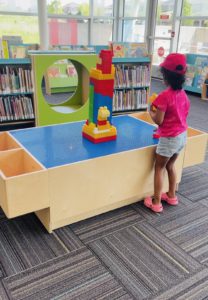
Embark on a Culinary Adventure: Introduce your kids to the joys of cooking and baking. Include activities like making homemade ice cream, organizing a backyard BBQ, or trying out new recipes together. It’s a great opportunity to teach them about healthy eating, kitchen safety, and the joy of preparing meals for loved ones.

Explore Local Attractions: Take advantage of the summer break to explore your local area. Visit museums, historical sites, zoos, or botanical gardens nearby. Research local events and festivals happening during the summer and mark them on your bucket list. These adventures not only entertain but also provide educational opportunities.
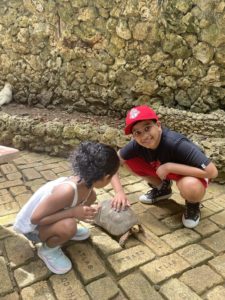
Connect with the Community: Instill a sense of social responsibility and community engagement in your kids. Include activities like volunteering at a local shelter, organizing a donation drive, or participating in a community garden project. Such experiences foster empathy, compassion, and a sense of giving back.

Get Sporty: Encourage your children to get active and try out new sports. Whether it’s joining a summer sports camp, playing mini-golf, learning to ride a bike, or mastering a new skill like skateboarding, the summer is an ideal time to explore various physical activities.
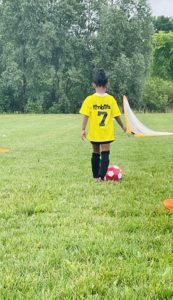
Plan a Family Adventure: Involve the whole family in planning and experiencing an exciting adventure together. Whether it’s a road trip to a national park, a beach vacation, or a visit to a theme park, spending quality time as a family creates cherished memories that will last a lifetime.

A summer bucket list for kids is a roadmap to an exciting and fulfilling summer break. By including a variety of adventures, experiences, and creative pursuits, you can create a summer filled with joy, exploration, and growth. Remember to involve your children in the process, allowing them to contribute their ideas and interests to the list. So, grab a pen and paper, sit down with your kids, and start brainstorming the ultimate summer bucket list. Get ready to embark on a summer of adventure, fun, and memories that will be treasured for years to come.

















